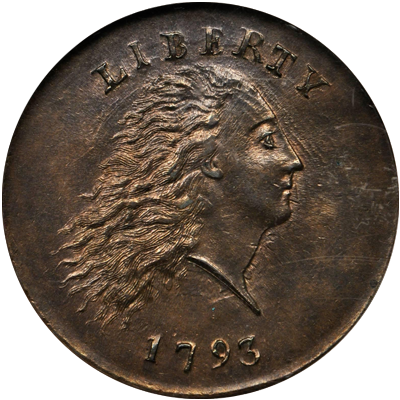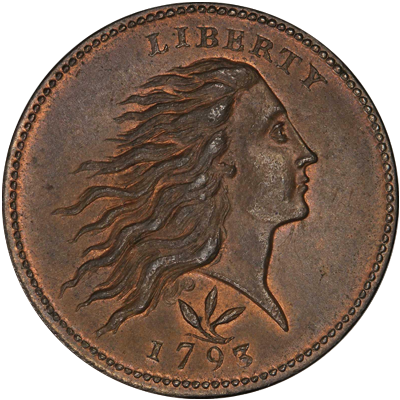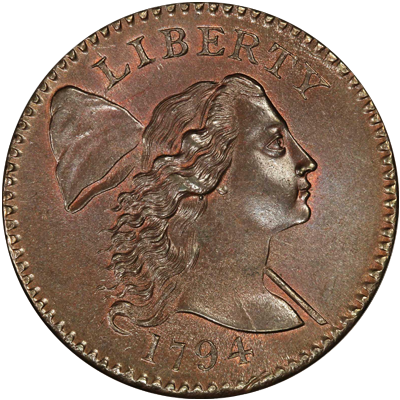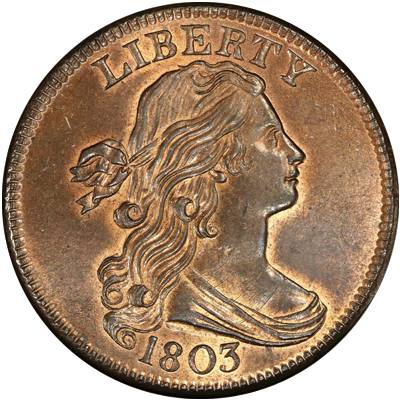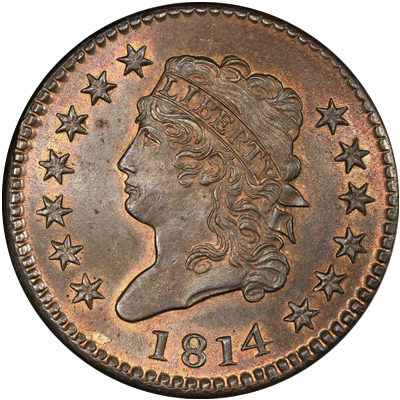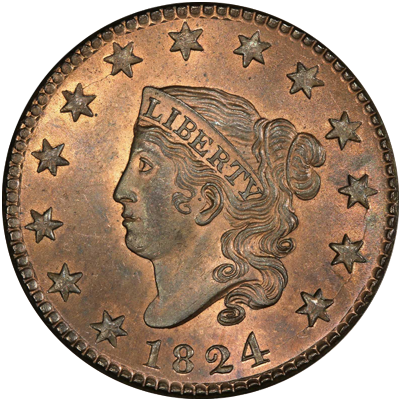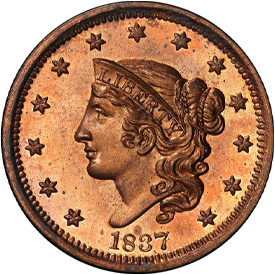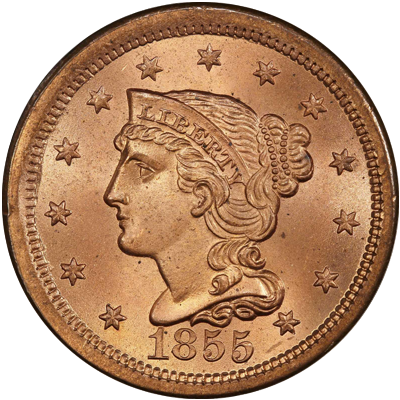The humble U.S. Cent was first coin minted by the newly-opened Philadelphia mint in 1793 and has the distinction of being struck in every year since then with the solitary exception of 1815 – a record of consistency unmatched by any other denomination. All other denominations saw gaps in production, though most of these gaps occurred in the late 18th and early 19th century. From its inception in 1793 through its replacement by the small copper-nickel cent in 1857, cents were struck from pure copper and were slightly smaller than today’s half dollar.
Large Cents are divided by today’s collector into two main groups. The “early dates” which span the period 1793 through 1814, and the so-called “late dates” which cover the period from 1816 through 1857. Fascinating die varieties abound in the early dates, and these were thoroughly covered by Dr. William Sheldon in his 1949 book, Early American Cents which was revised in 1958 and given a new, and more endearing name; Penny Whimsy. Though Dr. Sheldon was not the first to attempt a classification of U.S. Large Cents, his work was vastly superior and more complete than previous efforts, and today the early cent varieties are known by their Sheldon numbers.
While the late dates are far more uniform in appearance than the earlier issues, they too have been extensively studied. Howard R. Newcomb’s United States Copper Cents: 1816 to 1857 is the standard reference for these coins and a growing number of collectors are now appreciating these varieties as well as the earlier Sheldon varieties.
Relatively few dates of large cents are difficult or extremely costly to obtain. Among the “keys” are the 1793 of any type, 1799, 1804 and perhaps one could add 1821 and 1823. Nearly all the rest are relatively available, although certain varieties are extremely rare.
Few areas of numismatics have as long a history, or a more devoted following than the early large cents. They covered the period from just after the country’s formation, to the eve of the Civil War, and were struck in sufficient quantities for all U.S. citizens to know them well. Their replacement in 1857 coincided with the “birth” of U.S. coin collecting as a hobby, and in a time when Proof U.S. Double Eagles sold for little over face value, the early large cents were trading at hundreds of times their face value.
Perhaps Dr. Sheldon said it best, when he noted in his book: "early coppers have long been looked upon by coin dealers as the bellwethers of the market, and for a century and a half now they have been the backbone of American numismatics; they are less influenced by depressions and booms than are other coins, are less subject to speculative buying, and in the lower grades of condition, at least, can be obtained in decent numbers by people of slender means."
